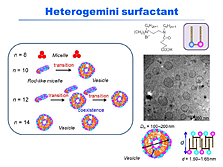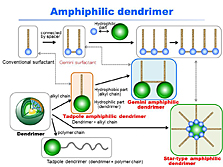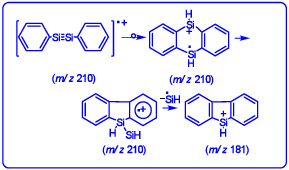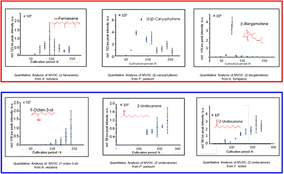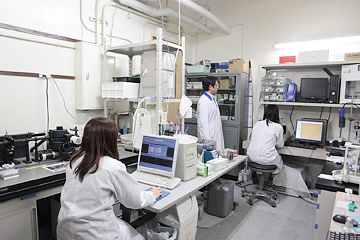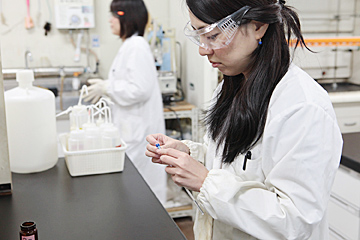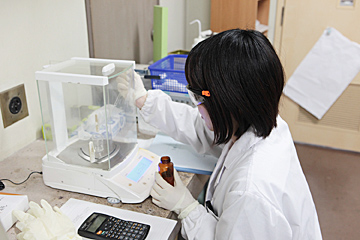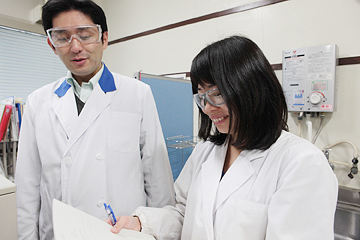Laboratory of physical chemistry of condensed matter
1 | Physical chemistry of soft matter : surfactants, amphiphilic polymers, and metal nanoparticles
Surfactants consisting a hydrophobic group and a hydrophilic group in a molecule are widely used in various industrial fields. We aim at the development of novel amphiphilic compounds with unique structure, which are expected to have higher physicochemical properties than the conventional monomeric surfactants.
We have recently designed and synthesized new types of “gemini surfactant” with two alkyl chains and two hydrophilic groups and “amphiphilic dendrimer” containing several alkyl chains and a dendrimer skeleton with the aim of achieving high performance and versatile functionality. We have studied their physicochemical properties by the measurements of electrical conductivity, and static and dynamic surface tension. Furthermore, we have investigated nano-structures of aggregates formed by the novel amphiphilic compounds by static and dynamic light scattering, transmission electron microscopy, small-angle X-ray scattering (SPring-8), and small-angle neutron scattering (J-PARC).
Fig. 1 Aggregation properties of heterogemini surfactants with nonidentical hydrophilic groups in a molecule (left: transition and coexistence of aggregates by changing alkyl chain length and surfactant concentration, right: cryo-TEM image of vesicles formed by the heterogemini surfactant, and the interdigitated bilayer structure).
Fig. 2 Tadpole and gemini-type amphiphilic dendrimers, and star-shaped amphiphilic dendrimers with multiple alkyl chains and multiple hydrophilic groups developed by our group: we study interfacial adsorption and aggregation properties using these amphiphilic dendrimers.
2 | Theoretical studies of fragmentation and ion-molecule reaction in the gas phase and applications for identifying microbial volatiles in the environments of cultural properties
We are studying the mechanism, kinetics and dynamics for unimolecular dissociation, ion-molecule and ion-surface reactions in gas-phase using mass spectrometry and ab initio calculations.
Our research focuses on constructing a theory for predicting mass spectra of phosphopeptides and glycopeptides (bioactive compounds) and organosilicons (functional materials).
Furthermore, we are also studying microbial volatile organic compounds (MVOCs) emitted from the soil-derived fungi for the purpose of preserving cultural properties. In order to identify these MVOCs, the fragmentation theory in mass spectra can be used. In order to identify fungi from these MVOCs, this laboratory has invented and constructed software for detecting and identifying fungal species by multivariate statistics of IMS-GC/MS data of MVOCs.
Fig. 1 Fragmentation mechanism of organosilicon ions.
Fig. 2 Development of software for detecting and identifying fungal species by multivariate statistics of IMS-GC/MS data of MVOCs for the purpose of preserving cultural properties. Sesquiterpenes in MVOCs showed a defined peak at a particular period which corresponds to right before spore reproduction. Takeuchi et al., Surf. Interface Anal., 2012.

